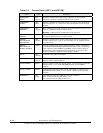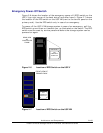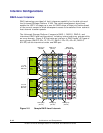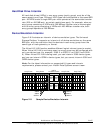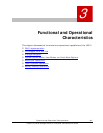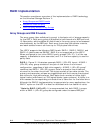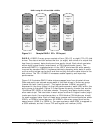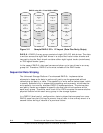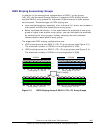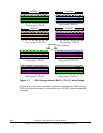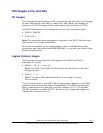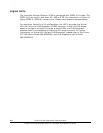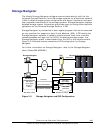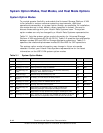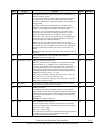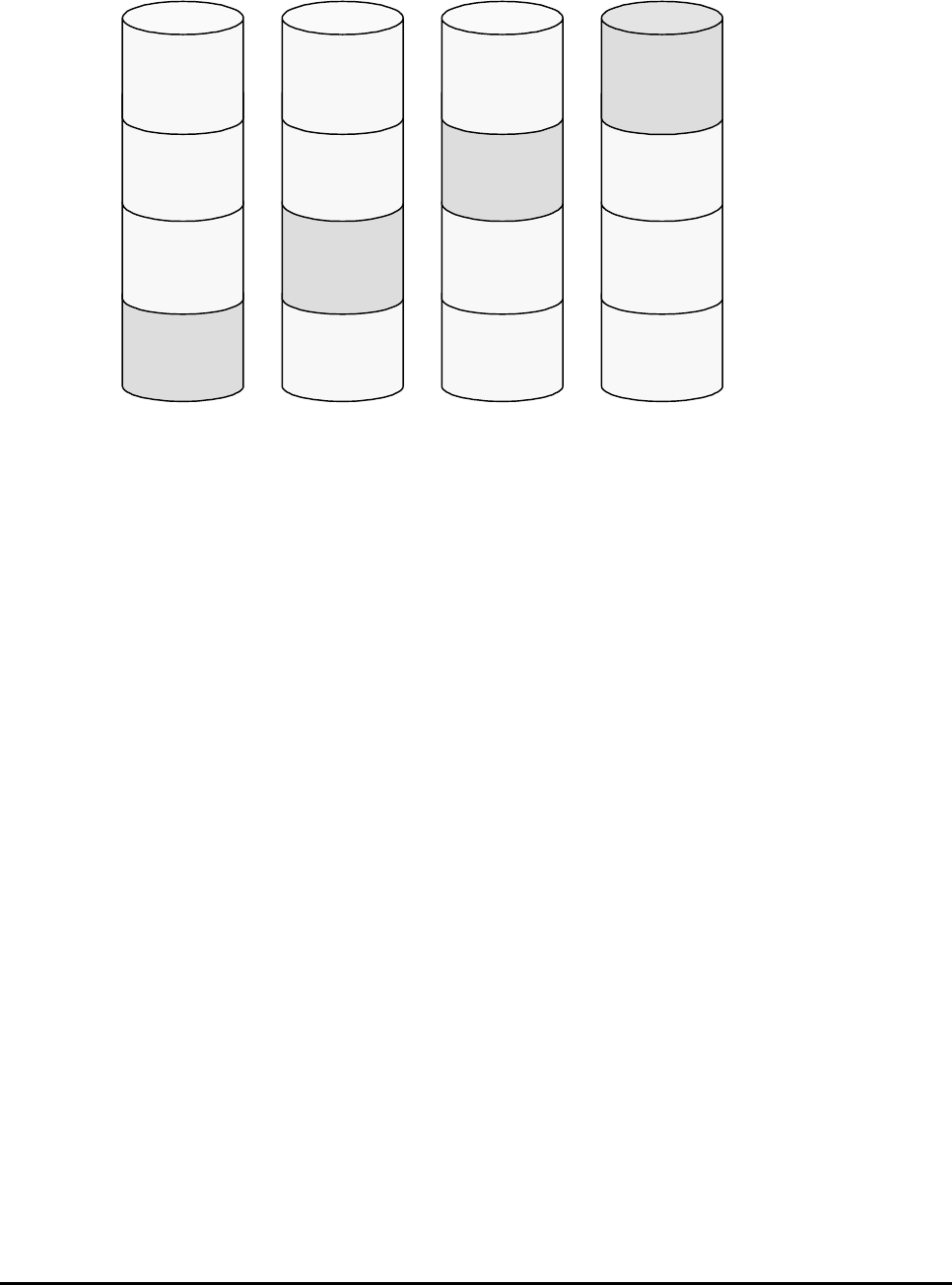
3-4 Functional and Operational Characteristics
Hitachi Universal Storage Platform V/VM User and Reference Guide
Track 0
to
Track 7
Parity
Tracks
Track 8
to
Track 15
Parity
Tracks
Track 16
to
Track 23
next
8
tracks
Parity
Tracks
next
8
tracks
RAID-5 using 3D + 1P and 3390-x LDEVs
Parity
Tracks
Track 24
to
Track 31
Track 32
to
Track 39
Track 40
to
Track 47
next
8
tracks
next
8
tracks
next
8
tracks
next
8
tracks
Figure 3-2 Sample RAID-5 3D + 1P Layout (Data Plus Parity Stripe)
RAID-6. A RAID-6 array group consists of eight (6D+2P) disk drives. The data
is written across the eight disk drives in a stripe that has six data chunks and
two parity chunks. Each chunk contains either eight logical tracks (mainframe)
or 768 logical blocks (open).
In the case of RAID-6, data can be assured when up to two drives in an array
group fail. Therefore, RAID-6 is the most reliable of the RAID levels.
Sequential Data Striping
The Universal Storage Platform V’s enhanced RAID-5+ implementation
attempts to keep write data in cache until parity can be generated without
referencing old parity or data. This capability to write entire data stripes, which
is usually achieved only in sequential processing environments, minimizes the
write penalty incurred by standard RAID-5 implementations. The device data
and parity tracks are mapped to specific physical disk drive locations within
each array group. Therefore, each track of an LDEV occupies the same relative
physical location within each array group in the storage system.
In a RAID-6 (dual parity) configuration, data is striped twice across four rows.
RAID-6 uses two parity drives to prevent loss of data in the unlikely event of a
second failure during a rebuild of a previous failure.



